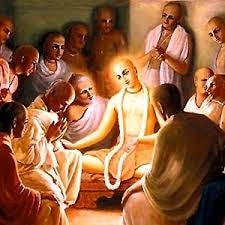During 14th – 16th centuries, Bhakti movements were a very dominant socio-cultural force in India. It touched upon every dimension of human life and affected contemporary thoughts very deeply. Leaders like Ramananda, Kabir, Guru Nanak, Ravi Das, Chaitanya Mahaprabhu, etc were associated with this movement.
Core principles of Bhakti movement
Personal God: The cardinal principle of Bhakti Cult was influencing devotion to a personal God, whose grace was the only means of attaining salvation or Mukti. It stressed the idea of a personal God and pointed out the absurdity of the caste system in the presence of God and the futility of external rites and ceremonies. It allowed both men and women to achieve salvation by Bhakti.
Oneness of God and Indispensable Role
of Guru: God is one and he alone should be worshipped. By following the path of true devotion (Bhakti) one can find salvation or (nijat, mukti). A true guru is indispensable for realizing God or attaining salvation.Worshipping: Condemnation of rituals, ceremonies and blind faith and rejection of idol worship by many Saints.


